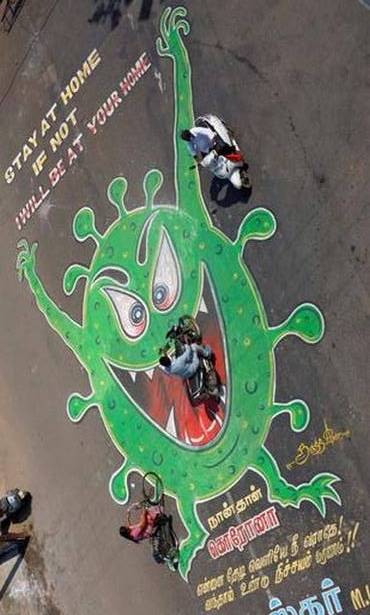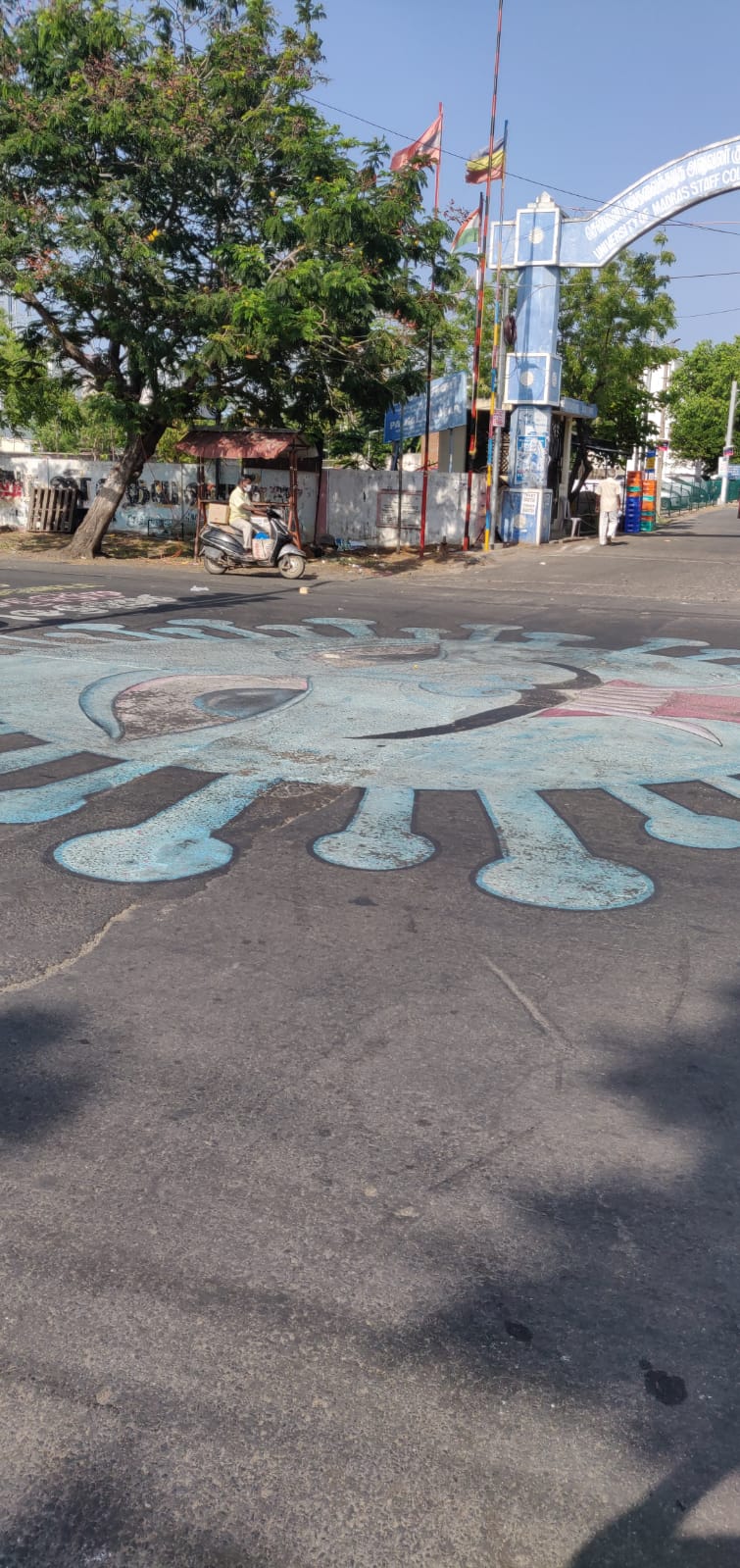Accession card
Description
Floor drawings, especially those made by variously connecting a grid of dots using white rice flour powder or paste, are often seen at the entrance of people's homes in Tamil Nadu. Known as the kolam, these designs are typically executed by women as part of early morning household chores and renewed daily as a recurring motif of everyday life. This kolam depicts the coronavirus as the evil eye that will protect, but equally harm, if not heeded.
In Tamil culture, our daily life is marked by the quest for achieving a balance, between the many auspicious or life-affirming forces and those that deplete them. These corona drishti drawings are being used by local police to draw the general public's attention to the harmful potential of the virus which is both invisible and unknown, through concrete actions for mitigation in the present. It is a common belief that the evil eye must be routinely placated through routine offerings or abstentions. In this version, created as part of their social awareness campaign for physical distancing, the use of face masks and the stay at home order, Chennai's police have resorted to a familiar trope to gain popular acceptance of a new malign force that is in need of appeasement.
Code
Date
Credits / copyrights
1st image: From the web
2nd image: Aarti Kawlra
Related links
Title
Medium
- Image
Image contains
Linguistic translation
drishti: evil eye
kolam: form of floor drawing made by using rice flour, chalk powder or rock powder in parts of South India and South East Asia





Comments
A good campaign! In the